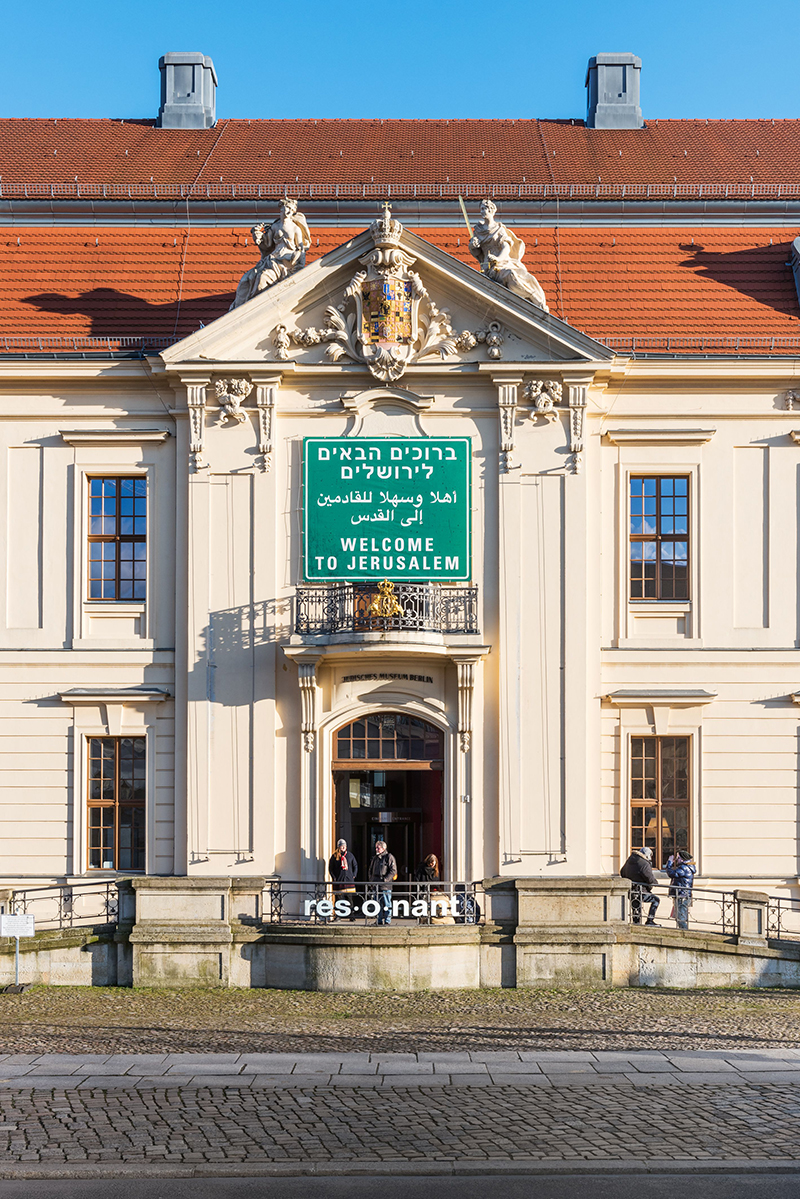On the difficulties the organizers of the “Welcome to Jerusalem” exhibition encountered doing justice to the ideal of justice
In the Islamic tradition and in the Koran itself, the biblical story of David and Uriah is told in a metaphorical form that differs from the version in the Bible (Koran: Sura 38/21–25): two brothers come to King David and ask him to settle a dispute between them. One of them describes the situation. He tells David that his brother has 99 ewes, but he himself only has one. Now his brother was pressuring him to give him his only ewe. Directly after this brief depiction, David passes his judgment: the one brother’s desire to add the one ewe to his 99 was an injustice to the other brother. The judgment could have been the end of the story, had David not suddenly realized that his decision was unjust. He regretted it deeply. Many Muslim commentators have discussed the sudden turn in the story. One explanation for why the judgment is unjust despite the clarity of the situation is that David made his decision after hearing only one side. In this interpretation, the moral of the story is that in conflicts or disputes, both sides must be allowed to present their perspectives and arguments.
This universal ideal of justice is central to the Jewish and Islamic traditions—the museum hopes approach it in the exhibition Welcome to Jerusalem. In its depictions, efforts were made to take the various perspectives into consideration as objectively as possible, both in terms of language and content. Fully aware of the volatility of the situation and long before Trump’s surprising Jerusalem declaration, the organizers attempted to maintain this balanced approach, down to the smallest details. People from various groups and sides of the conflict were included to take an active part and present their point of view. The organizers spoke with Arab and Jewish artists, as well as others, and hired guides of various backgrounds.
Some Arab artists refused to be involved, because they were worried that in their circles they would be perceived as normalizing the relationship with Israel. It was often said: it was clear that the Jewish Museum was a federal German entity, and therefore represented a much-desired neutral ground and not a representative of the Jewish state with a hidden agenda. But “normal people” in Arab countries wouldn’t understand that. For them, there was no difference between “Jewish,” “Israeli,” and “Zionist.” The Palestinian artist Mona Hatoum was the exception and contributed an object.
Perceptions of the exhibition and reactions to it were perhaps controversial not despite the its multi-perspectival character, but rather precisely because of it. That comes as no surprise, because everything related to this city is seen as a dichotomy.
Some people criticized Mona Hatoum’s involvement, others the relatively minimal presence of Arab artists. For some, Muslim symbols and for others, Jewish symbols were overrepresented. The one side asked why a menorah was depicted on the flyer. The other side criticized the dominant profile of the Dome of the Rock. Even the welcome sign, which imitates a real street sign and was conceived as an attention-getter, wasn’t left uncriticized: people with Arab backgrounds found fault with the use of a wrong preposition in Arabic, taking it to be a literal translation from the Hebrew, while for others the simple presence of the Arabic writing was too much. Some identified the green background of the sign with the color of the prophet, and therefore a symbol of Islam. Others saw it as the color of Israeli road signs, interpreting it as a symbol of the Israeli state.
We know that absolute objectivity is impossible in representation, and that visitors’ subjectivity is infinite. As they say, an art object is born once when the artists creates it, then it experiences a rebirth in the eyes of each viewer. Thus, we’re pleased with every rebirth of our represented objects. Whatever you see in the welcome sign on the front of the museum, don’t stop at that sign—come inside and gain new insights from the objects presented!
Walid Abd El Gawad, a scholar of Islam and a W. Michael Blumenthal Fellow at the Jewish Museum Berlin, acted as a consultant to the team of curators who worked on “Welcome to Jerusalem.”
